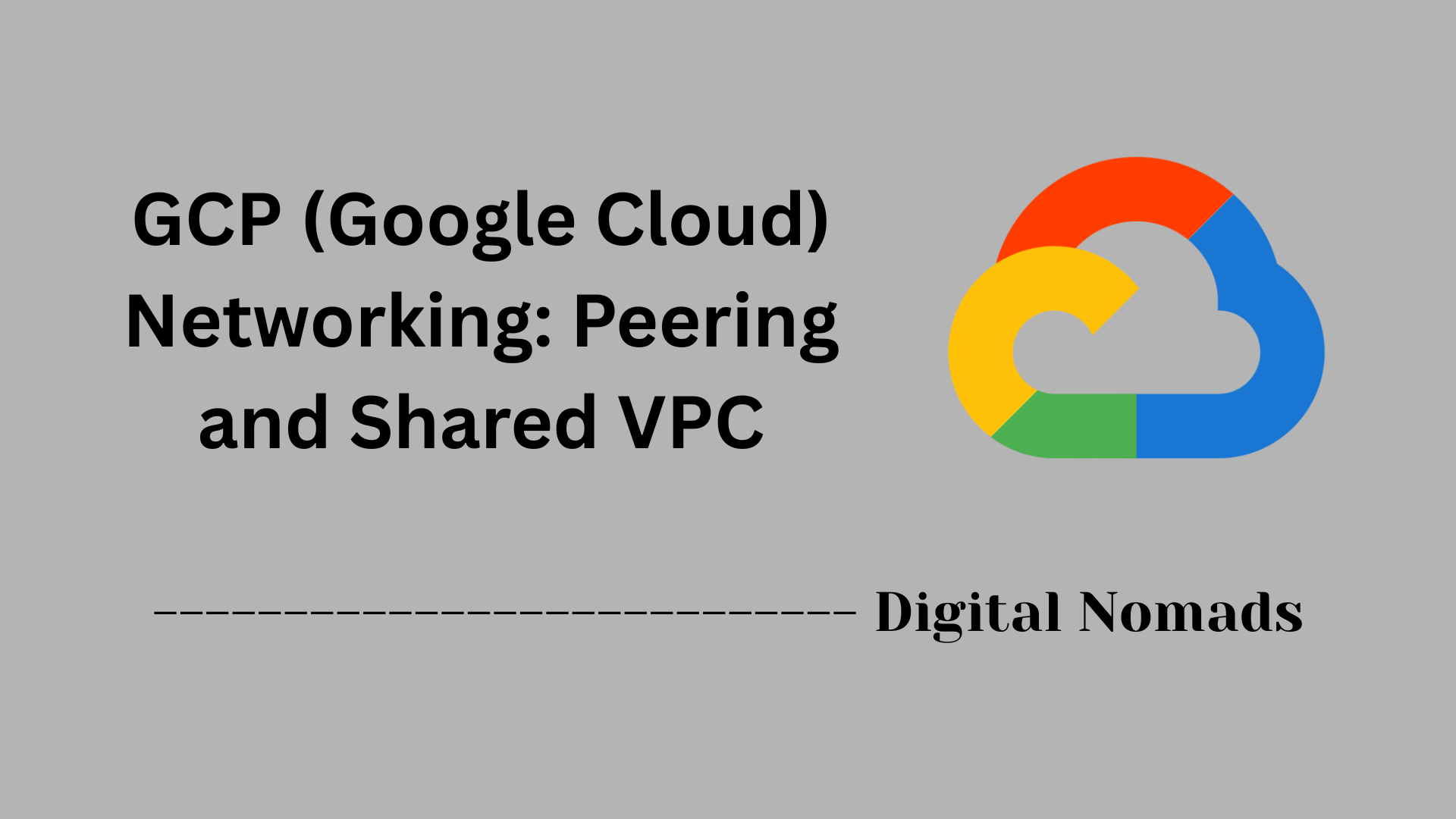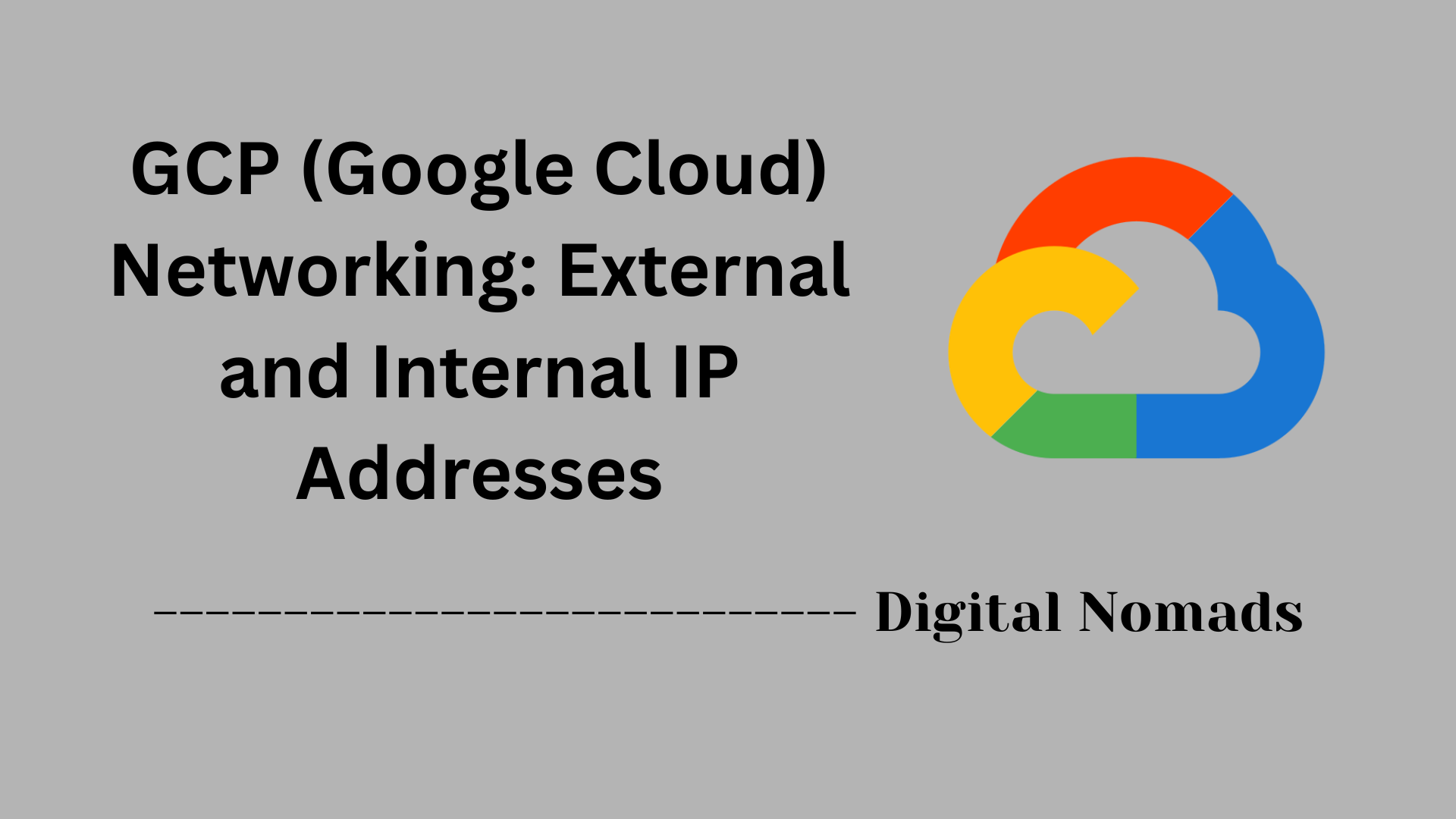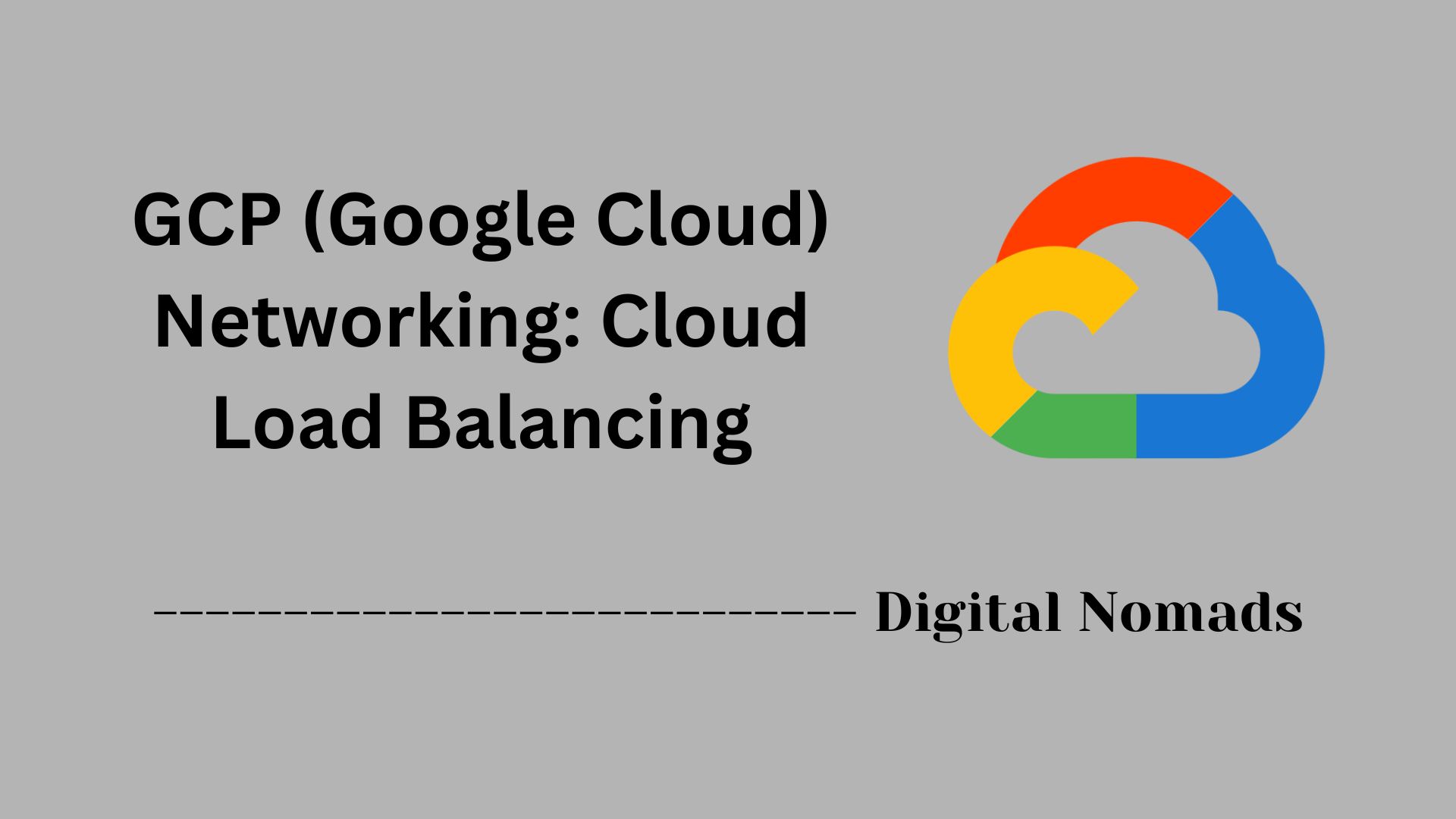Table of Contents
- Overview
- Cloud Interconnect
- Cloud VPN
- Comparison Table
- Conclusion
Overview: GCP Networking – Cloud Interconnect and VPN
Google Cloud Platform (GCP) Networking provides a suite of tools and services that allow organizations to connect their on-premises and cloud resources securely and efficiently. Two of the most important services in this area are Cloud Interconnect and Cloud VPN.
What Is Cloud Interconnect and Cloud VPN?
Cloud Interconnect and Cloud VPN are solutions designed to extend your private IT infrastructure into Google Cloud, enabling hybrid and multi-cloud architectures.
- Cloud Interconnect offers dedicated, high-capacity, and highly available physical or partner-mediated connections from your data center to Google Cloud’s network.
- Cloud VPN uses secure, encrypted tunnels over the public internet to link your on-premises or other cloud environments with your Google Cloud Virtual Private Cloud (VPC) network.
Why You Need to Know About Them
- Hybrid and Multi-cloud Strategies: Modern architectures often require seamless and secure connectivity between on-premises environments and the cloud, or between multiple clouds.
- Security and Compliance: Transmitting sensitive data between environments securely and with compliance considerations (encryption, dedicated circuits, redundancy) is mission-critical for many organizations.
- Performance and Reliability: Ensuring predictable, high-performance connectivity—especially for latency-sensitive or large-scale workloads—can be essential.
- Scalability and Flexibility: Easily expand bandwidth or add redundancy as your workloads grow and evolve.
How GCP Networking Works
1. Cloud Interconnect
- Establishes a direct, private link from your on-premises data center to Google’s backbone at high bandwidths (up to 100 Gbps).
- Bypasses the public internet completely, thus improving security, performance, and reliability.
- Options for dedicated connections (for maximum control and throughput) or through a supported partner (for greater flexibility).
2. Cloud VPN
- Creates secure, encrypted tunnels using the IPsec protocol between your existing infrastructure and Google Cloud.
- Sends data across the public internet, but shields it using strong encryption.
- Scales flexibly and supports both static and dynamic routing, making it suitable for a variety of connectivity needs.
Summary Table
| GCP Networking Option | How It Connects | Security | Best For |
|---|---|---|---|
| Cloud Interconnect | Private, dedicated circuit | Physically private | Large, latency-sensitive workloads; data center extension |
| Cloud VPN | Encrypted tunnel (public) | IPsec encryption | Secure hybrid/multi-cloud connectivity; compliance-driven use cases |
Knowing the differences and strengths of each option empowers organizations to design robust, cost-effective, and secure cloud architectures for both current and future business needs.
Cloud Interconnect
Google Cloud Interconnect enables organizations to establish high-speed, reliable connections between their on-premises networks and Google Cloud’s infrastructure. There are two main types with different options to meet bandwidth, redundancy, and operational needs.
Types of Cloud Interconnect
- Dedicated Interconnect: Provides a direct, physical connection to Google’s network at partner colocation facilities. Available in 10 Gbps or 100 Gbps circuit capacities for high-throughput requirements.
- Partner Interconnect: Offers connectivity to Google Cloud through a supported service provider. Bandwidth options range from 50 Mbps up to 50 Gbps per interconnect, ideal where colocation is not feasible.
Key Features
- Private Connectivity: Traffic bypasses the public internet for enhanced security and performance.
- High Availability: Designed for 99.99% SLA with redundant links and failover support.
- Scalability: Bandwidth can be increased based on changing workload demands.
- Direct Access: Connect on-premises resources directly to Google Virtual Private Cloud (VPC) networks.
Step-by-Step: How to Set Up Cloud Interconnect
- Select Interconnect Type: Decide between Dedicated Interconnect (for direct, physical links) or Partner Interconnect (via service provider).
- Order and Provision Connections: Contact Google (for Dedicated) or a partner (for Partner Interconnect) to initiate the setup and specify location and bandwidth needs.
- Create VLAN Attachments: In the Google Cloud Console, configure VLAN attachments (“interconnect attachments”) to establish connections to specific VPCs.
- Configure Routing: Set up dynamic (BGP with Cloud Router) or static routing depending on your network design and resiliency requirements.
- Test Connectivity: Validate the physical and logical connectivity, monitor routes, and ensure traffic flows between on-premises and Google Cloud.
Best Practices
- Deploy connections in multiple locations (for redundancy and resilience).
- Use Cloud Router for simplified, dynamic route management.
- Regularly monitor usage and performance with Google’s Network Intelligence tools.
Cloud VPN
Cloud VPN enables secure, encrypted connectivity between your on-premises or another cloud environment and your Google Cloud Virtual Private Cloud (VPC) network. It transmits data through IPsec VPN tunnels and is ideal for hybrid or multi-cloud architectures that require private, secure communications.
Types of Cloud VPN
- Classic VPN: Provides basic site-to-site connectivity using static or dynamic routing. Suitable for smaller or non-critical workloads and offers a 99.9% availability SLA.
- High Availability (HA) VPN: Delivers enhanced reliability with automatic failover, dynamic routing (BGP support), and a 99.99% availability SLA. Recommended for production or mission-critical environments.
Key Features
- Encryption: End-to-end traffic protection using IPsec protocols.
- Multiple Tunnels: Supports the creation of redundant tunnels for increased throughput and reliability.
- High Availability: Automated failover and seamless recovery with HA VPN.
- Scalability: Suitable for various workload sizes by adding or resizing tunnels as needed.
- Interoperability: Compatible with most third-party VPN solutions.
Step-by-Step: How to Set Up Cloud VPN
- Choose VPN Type: Determine whether to use Classic VPN for straightforward, legacy connections or HA VPN for greater redundancy and dynamic routing.
- Create a Cloud VPN Gateway: In the Google Cloud Console, navigate to the VPN section and create a new VPN gateway in your selected VPC and region.
- Configure VPN Tunnels: Add one or more VPN tunnels specifying remote peer IPs, shared secrets, and (if using HA VPN) set up BGP sessions for dynamic routing.
- Set Routing Options: Use static routes for Classic VPN or dynamic BGP routing for HA VPN, aligning with your network requirements.
- Validate and Monitor: Check tunnel status and ensure encrypted traffic flows as expected. Use Google Cloud monitoring tools for ongoing visibility and alerting.
Best Practices
- Prefer HA VPN for production environments to maximize uptime and reliability.
- Regularly rotate pre-shared keys for better security.
- Monitor tunnel status and performance using built-in diagnostics.
- Deploy redundant tunnels across multiple regions if high resilience is required.
Comparison Table
The following table highlights the key differences and similarities between Google Cloud Interconnect and Cloud VPN. This comparison helps guide the selection of the most suitable connectivity solution for your hybrid or multi-cloud network needs.
| Feature | Cloud Interconnect | Cloud VPN |
|---|---|---|
| Connection Type | Private, direct or partner physical connections | Encrypted tunnels over the public internet |
| Bandwidth | Up to 100 Gbps per Dedicated Interconnect circuit; up to 50 Gbps per Partner Interconnect connection | Up to 250 Gbps per HA VPN gateway (aggregated across tunnels) |
| SLA | Up to 99.99% with redundant configurations | 99.9% for Classic VPN; 99.99% for HA VPN |
| Routing | Static or dynamic (BGP via Cloud Router) | Static or dynamic (BGP with HA VPN) |
| Encryption | No built-in encryption; traffic is private and off the public internet (encrypt at application/transport layer if needed) | IPsec-based, end-to-end in-transit encryption |
| Typical Use Cases | Large-scale, latency-sensitive applications; data center extension; hybrid cloud | Hybrid and multi-cloud connectivity; secure data transfer; compliance requirements |
| Redundancy/Failover | Multiple locations/zones for redundancy; recommended to use for high availability | HA VPN offers automatic failover and active-active tunnels |
Conclusion
Throughout this blog post on GCP Networking: Cloud Interconnect and VPN, we've explored the fundamentals and practical considerations of building secure, high-performance hybrid and multi-cloud connections using Google Cloud.
Key Takeaways
- Overview:
GCP’s networking solutions—Cloud Interconnect and Cloud VPN—empower organizations to securely, reliably, and flexibly extend their networks to the cloud. Understanding the capabilities of each is critical to building robust cloud architectures. - Cloud Interconnect:
- Offers private, direct or partner-mediated physical connections.
- Delivers high bandwidth (up to 100 Gbps), low latency, and reliability for enterprise workloads.
- Best suited for large-scale deployments, latency-sensitive applications, and scenarios requiring maximum performance.
- Cloud VPN:
- Provides encrypted tunnels over the public internet using IPsec protocols.
- Enables quick, secure connectivity for hybrid or multi-cloud use cases.
- HA VPN brings greater uptime (99.99% SLA) and resilience through redundancy and dynamic routing.
- Comparison:
- Cloud Interconnect offers greater speed, privacy, and reliability, while Cloud VPN is more flexible, easier to set up, and provides strong encryption.
- Choice depends on business needs, compliance requirements, and workload scale.
- Implementation & Best Practices:
- Both services support dynamic and static routing and can be monitored using Google’s toolset.
- For production and mission-critical environments, prioritize redundancy, monitor health, and rotate encryption keys as needed.
Thank you for joining us on this journey through GCP Networking! Whether you’re looking to streamline your hybrid cloud deployments or secure your data in transit, understanding these connectivity solutions puts you on the path to building a strong, scalable, and secure cloud foundation.
Happy cloud networking!




